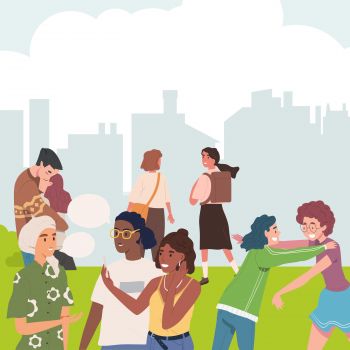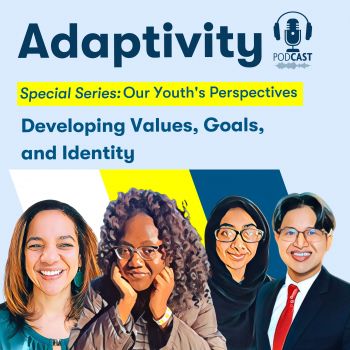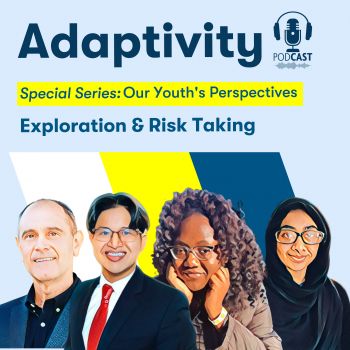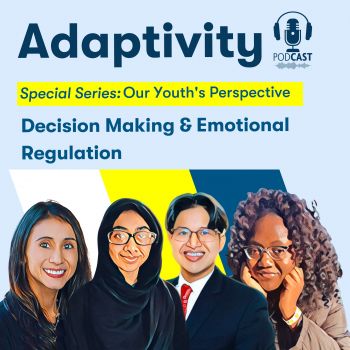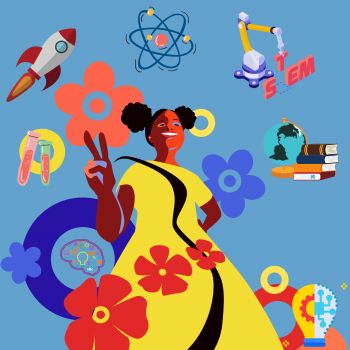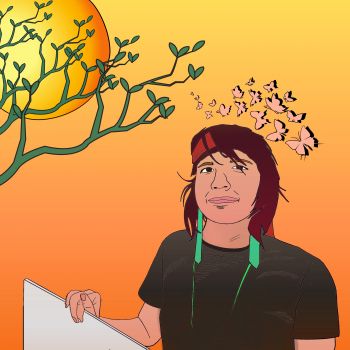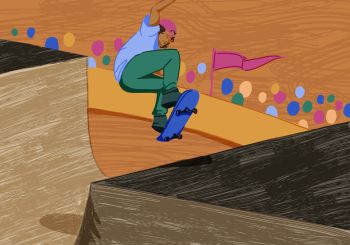Ron Dahl Two teenagers meet at a party. After exchanging 100 words and two kisses they are completely smitten. Within four days they feel as if the universe had always intended for them to be together. Soon, though they barely know each other, they would choose death rather than the torture of living apart.
Juliet O Romeo, Romeo, wherefore art thou Romeo? Deny thy father and refuse thy name. Or if thou wilt not, be but sworn my love.
Ron Dahl Juliet was 13 years old. Romeo, not much older.
Romeo I take thee at thy word: Call me but love, and I’ll be new baptized; Henceforth I will never be Romeo.
Ron Dahl Why were Shakespeare’s passionate protagonists so young? Perhaps he noted what many of us have observed about adolescence, it’s a period of life that creates a natural tinderbox for igniting passions.
I’m Ron Dahl, and this is Adaptivity. In each episode, we explore the science of adolescence and new insights into the rapid cognitive, emotional, and social changes that happen during these years. And how the developing adolescent brain is primed to promote healthy and adaptive learning.
And that leads us to strong emotions. We feel things deeply during adolescence. We develop new capacities to fall in love intensely, and not just with a particular person, but also with ideas and activities. This a key maturational window for sparking passionate interests—in literature, music, sports, or social justice–in ways that endure throughout our lives. Adolescence is also a time when we often feel intense sadness, anger, and fear of social rejection, reacting to subtle put-downs, humor, social competition, deciding to extend trust or an act of kindness, and learning how to manage our fears.
Raina Telgemeier During my fifth-grade year, I was having panic attacks. I was eventually diagnosed with emetophobia, which is the fear of vomit.
Ron Dahl That’s Raina Telgemeier, a New York Times best-selling young adult graphic novelist.
Raina Telgemeier When you’re a kid, you know, people puke around you all the time and you get the stomach virus when it blows through your class. And so I started having panic attacks. Anytime somebody was sick, anytime somebody, you know, looked a little funny in class… I didn’t want to eat the wrong foods. I was just—I was having a really hard time.
Ron Dahl Raina’s been chronicling her adolescent passions, fears, and anxieties in a series of New York Times best-selling young adult graphic novels. In her newest book, Guts, she delves into her intensifying anxieties during those years, including a fear of vomiting. Raina, thanks for joining us on Adaptivity.
Raina Telgemeier Thank you.
Ron Dahl During adolescence, we feel things intensely. And your graphic novels so wonderfully illustrate that. When did you first start channeling your anxiety attacks and other difficult emotions onto paper as comics?
Raina Telgemeier So I’ve been drawing since before I can remember. I was also writing a diary and journals and I started illustrating my journal entries. I didn’t really discover comic strips until I was about 9 years old. But as soon as I did, my characters that I was drawing started to have word balloons coming out of their mouths and started talking to each other and having conversations. As soon as I found that I could put all these different things together on the page, words, pictures and something we call emanata—which is like the little symbols next to a character’s head, like a sweat bead to show that someone’s nervous or the little stars to show that they’re they’re dazed or excited—it was just like the whole world opened up to me and I started to walk through my life and be able to sort of envision what it might look like if I drew it.
I think because I had this form of expression, I was able to play with it and to figure out ways to put things both in visuals and in words. Comics are a great communication tool for states of mind and for feelings that don’t really have physical components. And just you can use metaphors and you can use something as simple as the page turn [sound of page turning] to show the way a character is feeling and how that feeling might escalate or de-escalate. So, yeah, I think reading comics and then making them just gave me this wonderful ability to process things. It was such a good coping tool to deal with those hard years of being in middle school and being in high school.
Ron Dahl Learning to manage our feelings and control our behavior in the face of social challenges is at the heart of adolescence. One way to do that is through creative expression, like drawing comics. What drew you to use drawing and comics to help you process your own emotions?
Raina Telgemeier I think part of what drew me to the love of this medium in the first place was that comics are funny, you know, drawing a character surrounded by hearts just to show how much in love they feel when they’re twelve and have their first crush. And yeah. Crush is the right word, that’s for sure. So the feeling of then being stomped on or, you know, run over by a car or something, you can put that on the page. You can draw that, and it feels like a release. It feels like, OK, I’ve had this feeling, I’ve dealt with it, and now I can kind of move on. And so I found myself—this really began in middle school. Every single day I would rush home, and the first thing I had to do was draw and draw what had happened to me and how I was feeling, and then I could finally take a breath. And this was, you know, an hour to three hours every day. I sort of closed the book after a while and be like, “OK, I’ve processed everything. Now I’m ready to watch cartoons.”
Ron Dahl When we’re talking about adolescent development, it’s not just the teenage years. The period 9 to 13 before that is when so much of the drama and dynamics and intense feelings and nearly overwhelming feelings are occurring. And yet even as so often we have these negative associations and stereotypes, it is such a period of igniting passions. You found your passion in that age.
Raina Telgemeier I was lucky. I wasn’t able to spend all of my time with my people as a 12-year-old kid. I was just left with all these thoughts to process. And that was the place that I did it.
Ron Dahl If we would embrace the intensity and precariousness of this period of time, perhaps we could better remember the negative in relation to the positive. If you didn’t push yourself through that exposure, then you could be prevented by your feelings from doing things. This is what young people are learning. They’re learning how to navigate these complex social dynamics.
Raina Telgemeier What I remember is just the emotional state of something that happened. And I can build stories off of the memory of feelings, and Guts really taps into that. It taps into all the memories, the feelings, the embarrassment, the shame, the physical pain that I felt in my body as a manifestation of the anxiety that I was feeling.
Ron Dahl Our ability to step outside of ourselves and take a different perspective actually increases during adolescence. Taking the time to reflect on an experience, feelings, and behaviors can help us learn to handle strong emotions the next time they arise. We can change behavior by picking another reaction.
Jennifer Pfeifer Adolescence, you’re literally becoming a different person in the mirror. You’re seeing a different person. And a lot of those changes, they can be awkward or they can be embarrassing, like acne, body hair, you know, breast development, voice changes, getting your period. Things like that are sort of external that you can report on and even to some degree, others can report on about you.
Ron Dahl Jennifer Pfeifer is a psychology professor at the University of Oregon and an expert on the adolescent brain. She says in addition to the huge physical changes, puberty also kicks off changes that help reorganize our brain to be more efficient at responding to increasingly complex social challenges.
Jennifer Pfeifer There are increases in testosterone, a sex hormone that’s associate with pubertal development, and testosterone is related to social status. So basically what you have going on is as you enter puberty in early adolescence you also enter a new social environment of middle school. You have a confluence of factors elevating the importance of social status and yet also increased feelings of uncertainty about yourself and where you might fall in terms of social status.
Ron Dahl There is just so much to learn. And it feels so high-stakes and confusing. Making even a small social mistake can feel like a life or death matter. The adolescent brain is finely attuned to social information, including increased self-conscious attention to our own place in this confusing world. It’s about earning prestige, respect, autonomy. It is a natural motivation to matter in some larger sense. This intensified social focus helps us to learn more quickly—to learn who we are, where we fit, and who we aspire to be.
Jennifer Pfeifer The very features… we’ve often criticized adolescents for things like, “They’re too emotional, they’re too reward driven, they’re too social, they’re too uncertain about themselves.” Those kinds of features are exactly what you would want if you’re building a system designed to learn abstract and nuanced and socially contextualized things in a short amount of time. Those things are what’s driving the tremendous amount of learning that adolescents do and that makes them really flexible and have the capacity to adapt to a new environment because then they can really sensitively tune to and respond to these cues maybe faster than an adult would.
Ron Dahl And why do adolescents need to learn and adapt so quickly? Partly because their social worlds are expanding dramatically in a very short time. And that requires rapid responses—making quick decisions about what to do or say.
Jennifer Pfeifer For quite some time, researchers have been interested in trying to capture, “What are the emotional responses? What are the neural responses to this to an experience of rejection or being socially excluded?”
Ron Dahl Jenn and her team did a study on 11- to 18-year-olds where they measured their neural responses to social exclusion in a virtual ball-tossing game.
Jennifer Pfeifer So they’re basically playing this computerized version of catch with two other peers that are actually computerized peers.
Ron Dahl During the course of the game, the other avatars stop throwing the ball to the participant, unexpectedly excluding him or her from play.
Jennifer Pfeifer So we really work hard to make it feel like it is somewhat of a real social experience. What they’re seeing in the neuroimaging studies looking at this is that there’s a response in a brain region to that social exclusion that is also sensitive to even physical pain. That experiencing rejection, that experiencing social exclusion is actually felt in the brain as it being physically painful, as a kind of social pain.
Ron Dahl A similar study looked at what happened when the participant was over-included, receiving the ball more than was fair. Although the “pain” region quieted down during the over-attention, both versions of unfairness activated a region of the brain involved in reflecting about what other people are thinking or trying to see things from another’s perspective.
Jennifer Pfeifer It might be indicating that adolescents were really trying to figure out why on earth their peers were breaking the social rules of engagement. Those were both surprising. Surprise is a basic emotion. You learn a lot when you’re surprised because it means the world isn’t the way that you expected. So all of these emotions are incredibly important for learning and development in adolescence.
Ron Dahl Adolescence is also a time when we tend to develop heightened sensitivity to the importance of some social and physical cues. Posture, our tone of voice, and facial expressions are social signals that let others know what we’re feeling, and what they’re feeling about us. Research shows that we’re more attuned to facial expressions during adolescence compared to childhood or adulthood. It’s like paying extra attention in ways that support the intense social and emotional learning that happens during these years. Jenn’s team wanted to know how pubertal development is related to the way our brains respond to seeing other people’s emotional expressions, so they did another study monitoring changes in 9- and 10-year-olds’ brains over six years.
Jennifer Pfeifer When they were in the MRI scanner, we had them just passively viewing, on the screen all these different emotional expressions that would come up for just a couple of seconds at a time. So happy face, a sad face, an angry face, an afraid face, or even just a neutral face. So we kind of had all these emotions kind of flashing on the screen for a couple of seconds, all intermingled, intermixed.
Ron Dahl They found that as the participants got older, there was more activity in their brains when they saw emotional facial expressions. Much of this activity was in the nucleus accumbens, which is a brain region involved in processing information about rewards and motivating experiences. Looking at emotional expressions on others’ faces, even when those faces are flashed so quickly we can’t consciously notice them, also triggers more of a reaction during adolescence in a brain area called the amygdala. The amygdala directs us to pay attention to information in ways that help us take notice and learn.
Jennifer Pfeifer Even if the teachers tell you you have to put away your cellphones, you can’t have smartphones on in class, you’re still able to communicate with emotional expressions. You can’t talk in class. You can still engage in a lot of social communication through emotional expressions and other non-verbal cues.
Ron Dahl In Raina Telgemeier’s first bestseller, Smile, she tells the story of a dental catastrophe that defined most of her middle school years.
Raina Telgemeier One evening I was running and I tripped and fell and knocked out my two front permanent teeth. And then the story follows the next four and a half years of my life going through reconstruction surgery and having to wear a retainer that had false teeth attached to it and like going through several rounds of braces just to kind of get me back to where I have what people would consider a normal smile.
Ron Dahl How do you think it affected your development in that period of your life from age 11 and 12, which is a challenging time for the reasons we’re talking about, the added challenge of having your appearance, your ability to smile, your ability to laugh, and another target for the social dynamics to be teased and diminished?
Raina Telgemeier In my case, it meant that I wanted to close my mouth permanently. My two front teeth, after they were knocked out, my dentist put them back in, but they sat up a little higher in the front of my mouth than they were supposed to, so my side teeth were longer and I looked like a vampire. So that led to the nickname Vampire Girl. It was like, you know, suddenly I was just so much the target of teasing and I felt the need to hide myself. And if I did, you know, have an outburst of laughter or something. It was like, “Oh, gosh, what have I done? This is terrible. I can’t… I can’t show myself. And then in middle school, everybody suddenly gets obsessed with dating and with kissing and with who likes who. It was like, well, no one could possibly like me. Like, if I look like this, I’m a freak.
Ron Dahl It is so salient whether we are liked or disliked, whether we’re admired or diminished, respected or disrespected. That system’s amplified because the stakes of learning successfully are so high. That’s adaptive. And yet it feels like we’re on the edge of social death. We’re humiliated. One little thing goes wrong and it feels like we are dead socially.
Raina Telgemeier I think we’ve all felt that way about something. It doesn’t have to be your teeth. It doesn’t have to be an accident. We all focus on something that’s wrong with us and to anybody outside of your brain, that thing is so insignificant.
Ron Dahl We want to belong. We want to be admired. We want to find a way to contribute. We want to matter. That’s the adaptive path of going from a child whose identity is mostly as part of their family to beginning to establish a unique individual identity in a larger world. Having support and scaffolding, having people who make you feel like you matter and that you’re special, whether that’s a parent or a teacher, an adult, or a therapist, that feeling of mattering in a way that adds purpose and can help young people learn to navigate their emotions in ways that ultimately build resilience.
Raina Telgemeier So this is a scene in Guts where Raina is seeing that therapist for the first time, and she’s got all of these pictures in her mind and all of these feelings in her stomach. And then a few panels later, she’s surrounded by a swirl of words. And they say things like “fear of death,” “throwing up,” “needles,” “my parents dying.” You know, it’s like I’m scared of so many things. But then—and I think I’ve had more than one therapist, you know, say to me, “Just try.” It doesn’t matter if they’re the right words. It doesn’t matter if you can verbalize exactly what you’re thinking right now, what you’re feeling. But just try it. Just try. What do you have to lose? What’s going to hurt you if you try this food that you don’t like? You know, maybe you’ll feel uncomfortable for a while, but try being uncomfortable. See what happens. You know, it’s harder when you’re telling it to yourself. But it’s worth it.
Ron Dahl You captured that wonderfully. The feelings don’t harm us, it’s the avoidance that we do to control those feelings. And again, it’s such a simple insight. And yet it’s so powerful that the key step isn’t eliminating the fears, it’s approaching them despite some degree of discomfort and mastering them.
Thank you so much for sharing your insights and your process and where that inspiration has been coming from to be so courageous and vulnerable.
Raina Telgemeier Thank you for talking to me about it.
Ron Dahl Strong emotions are not problems to be stamped out. Like so many features of this window of development, they are essential to the social learning we need to help us thrive as adults. They direct our attention to social cues that help us find our place in the world outside of our immediate families. They motivate us to figure out who we are and how we want to matter to our social groups and communities. They provide an opportunity to learn coping techniques and problem-solving skills that can serve us well, for a lifetime. Empathy combined with encouragement to find a positive action can help. And that doesn’t mean stepping in to solve the problem. It means helping to support youth to learn to make good decisions. To learn from and recover from making some mistakes. To be resilient.
Adolescence is a developmental period of powerful social, emotional, and identity learning. Intense learning experiences go hand-in-hand with the experience of intense feelings.
I’m Ron Dahl, thanks for joining us on Adaptivity.
If you’d like to learn more about The Science of Adolescence, visit us at adaptivitypodcast.org. Share your thoughts by emailing us at adaptivity@developingadolescent.org or using the hashtag #adaptivitypod.
Our podcast is produced at UC Berkeley for the Center for the Developing Adolescent. Our Senior Producer is Shuka Kalantari. Our producer is Meghan Lynch Forder. Our engineer is Katie McMurran.

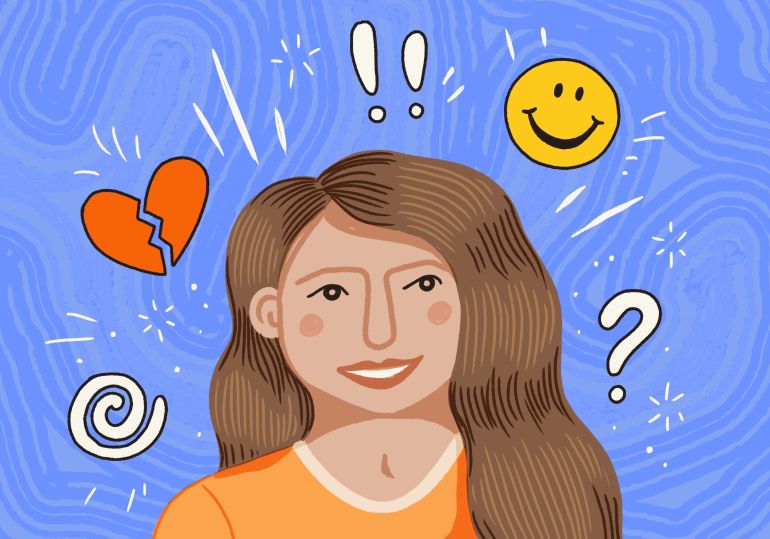
_350_350_80_c1.jpg)
_350_350_80_c1.jpg)
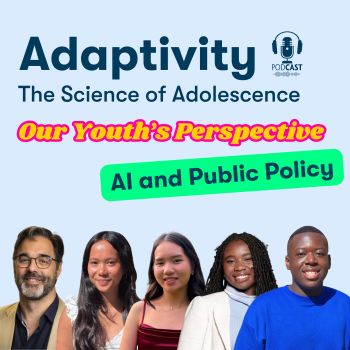
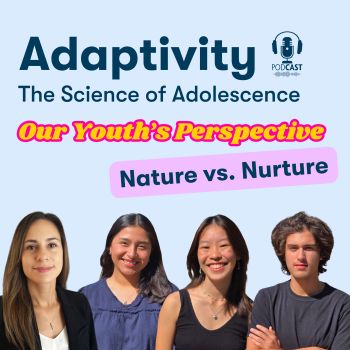
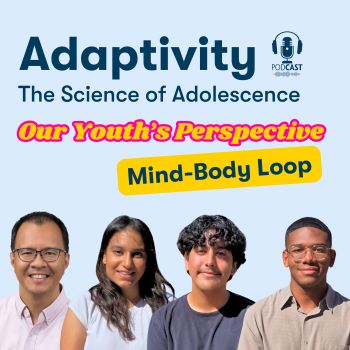
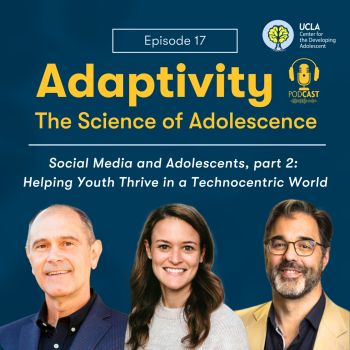
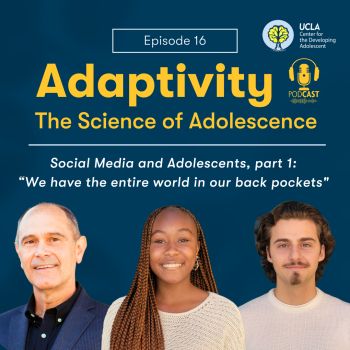
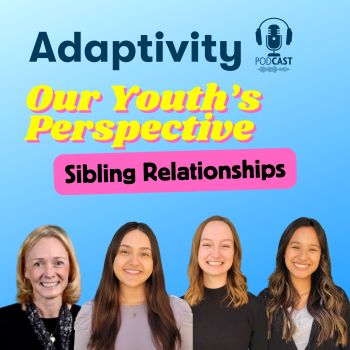
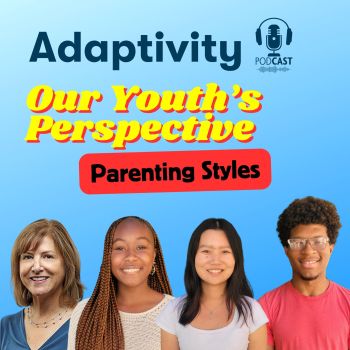
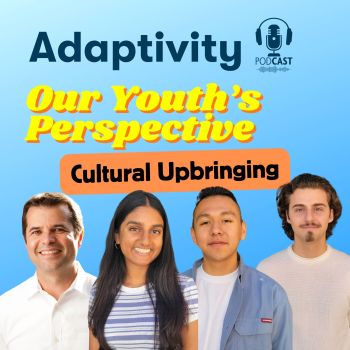
_350_350_80_c1.jpg)
